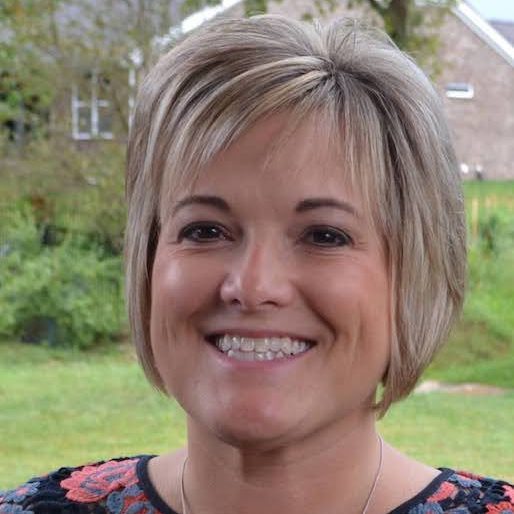Meet The Bronch Queen: A Nurse Practitioner’s Story

The role of the Advanced Practice Provider (APP) in the ICU has been evolving
Over the last several years, the role of the Advanced Practice Provider (APP) in the ICU has been evolving. As intensivist models have developed across the country, it has become apparent for the need for continuous provider coverage in the ICU and APPs have filled this gap. It is not uncommon for APPs in the ICU to be the sole provider available for patient emergencies and procedural competence. This is where my journey to bronchoscopy begins. It all began 6 years ago after several months of learning as a new NP and the need to obtain a difficult airway with a bronchoscope.
My mentor turned to me and said “you should really know how to do this in case I am not around. You game?”. Little did I know that my simple “of course”, would take more than 2 years to accomplish.
I was entering a frontier that had not been well traveled before.
My first hurdle: medical perception
The first hurdle to overcome in this journey is medical perception of whether NPs should be performing bronchoscopy. Literature review of the medical journals focused on whether APPs should perform only therapeutic vs diagnostic bronchoscopy including transbronchial biopsy. Unfortunately, there is little evidence to formerly study the outcomes. However, my mentor did not have any qualms about teaching me everything he knew and we proceeded with our goal.
My second hurdle: determine if this procedure was within my scope of practice
Hurdle number two was to determine if this procedure was within my scope of practice as well as requirements for credentialing from the institution. After a quick review of scope of practice and consulting other APP mentors, it was determined that it is, in fact, within the scope of practice for my national and state scope of practice. I made several calls to larger institutions to determine if the APPs were performing bronchoscopy and what training they may have completed. As my journey continued, it became apparent that didactic training was variable and mostly from clinical experience. Most pulmonary physicians receive years of training for bronchoscopy while completing their fellowship which differs from our training as APPs. No standardized, formal training program. Now what do I do? Well, after much searching, I found a program online and my learning began along with clinical experience and practice. The didactic learning was rather intense and required self-directed education. I had to become comfortable with the hands-on learning of the scope, anatomy of the airway with CT guidance, use of fluoroscopy, indications for the procedure, and how to handle complications. I found smart phone apps and continuously studied and challenged myself.
In the meantime, I approached the Advanced Practice Council at the institution to begin discussions regarding credentialing.
They had never credentialed an APP for bronchoscopy and needed more information. It was fortunate that they quickly made a determination for scope of practice but did not have a process for credentialing. As a result, I put together a training outline for APPs with a written test to be proctored. I made several presentations to other committees but eventually got approval with the requirement of documentation of completion of such program along with 50 successful procedures to be considered for credentialing. A little over a year into this process, I became the first APP to be credentialed for therapeutic and diagnostic bronchoscopy at the institution. Score! But the journey was far from over.
My third hurdle: Medicare had refused reimbursement for a bronchoscopy I performed
Hurdle number three came about with a visit from our billing specialist who approached me during clinic one day to tell me that Medicare had refused reimbursement for a bronchoscopy I performed in the ICU. Further review of the denial revealed that reimbursement was denied solely based on the fact that I was an NP. Hmmm, that answer was unacceptable and I initiated dialogue with the CGS medical directors for the region. I have to admit, they were fairly responsive to this dialogue. This was an issue that they had personally not encountered. I also contacted reimbursement representatives from the AANP to inquire if they had come across this issue elsewhere.
The primary objective for the medical directors focused on my training and verification of scope of practice. So, next stop, the Kentucky Board of Nursing (KBN) and Advanced Practice Committee. I contacted my state of board of nursing and requested to be placed on the agenda for the next Advanced Practice Committee meeting to present the information and ask for a Practice Advisory Statement. The council was happy to allow time at the meeting and I presented my findings of the pertinent issues surrounding scope of practice, training and competency, as well as institutional credentialing. Several weeks after the council meeting, the KBN issued a Practice Advisory confirming scope of practice within specified guidelines which was the first state to do so.
Success!!!
Chugging right along, now back to CGS medical directors. I presented the findings of the Practice Advisory along with successful institutional credentialing to the medical directors. I received a quick response after they reviewed the information and confirmed that they were indeed reversing their decision and would now reimburse for bronchoscopy for NPs. After more than 2 years from the start of this process, I could successfully perform and get reimbursed for my work. About time, right?
Closing Thoughts
In closing, I would like to mention my reasons for sharing this journey. It all started with an incredibly supportive team of physicians who encouraged me along the way to be the best NP I could. The KBN was instrumental in this journey as well and I am proud to practice in a state that supports functioning at the highest level of scope of practice. This process was a true experience of collaboration between the providers, institution, and regulatory agencies to promote the delivery and appropriate reimbursement of excellent care to our patients. We had finally reached the point where I could perform and offer the same level of care-clinical and procedural-to our patients whether in the office setting or ICU to improve patient outcomes and maintain safety.
It challenged me to break away from being told “no” and focus on “why not?”.
Whether physicians or APPs, I believe we can all excel in our areas of clinical expertise and provide exceptional care to our patients with patience, collaboration, and perseverance.








Leave a comment